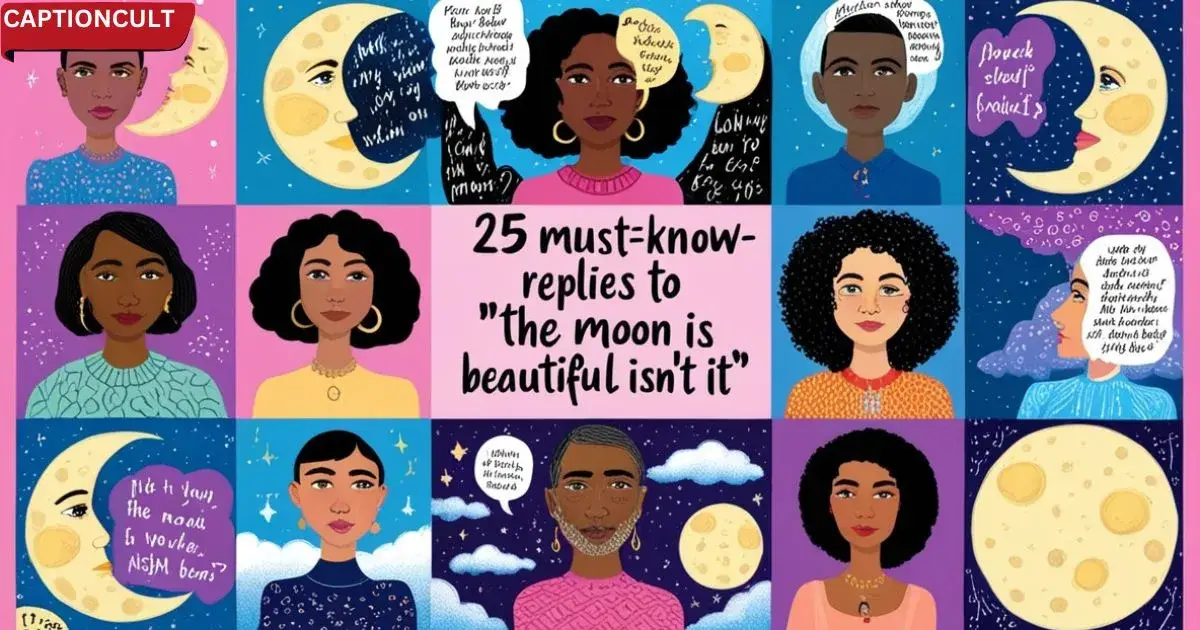The phrase “The moon is beautiful isn’t it?” might seem like a simple observation about the night sky. However, in certain contexts, particularly within Japanese culture, this seemingly innocuous statement carries a much deeper meaning. Understanding the nuances behind this phrase is crucial for crafting an appropriate and insightful response. This article will explore the cultural significance of isn’t the moon lovely meaning, providing 25+ creative, witty, and insightful replies to help you navigate this subtle social situation effectively.
The Context: Unveiling the Nuances of “Isn’t the Moon Lovely Meaning?”
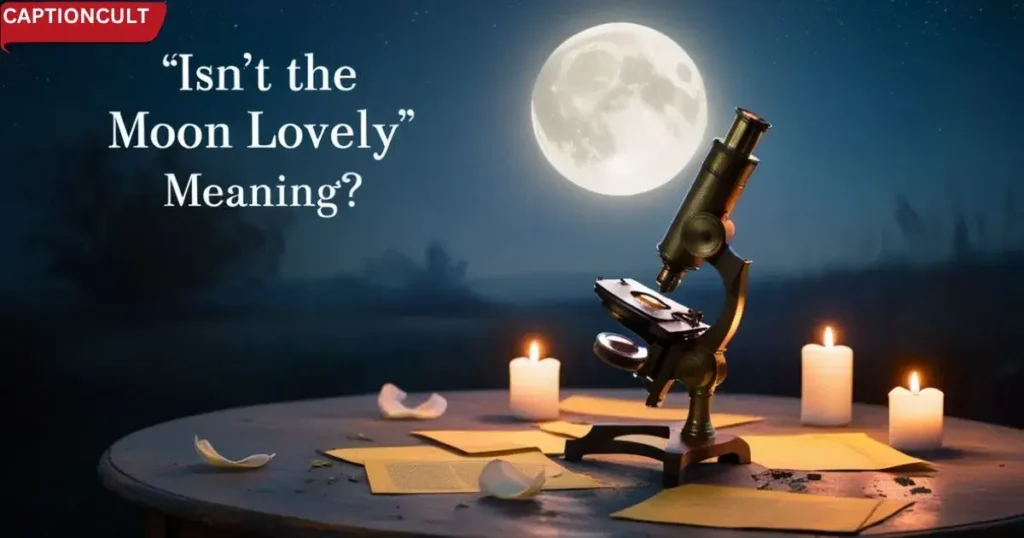
The phrase “The moon is beautiful, isn’t it?” (月が綺麗ですね, Tsuki ga kirei desu ne in Japanese) gained widespread recognition through the writings of Natsume Sōseki, a renowned Japanese author. In his works, this seemingly straightforward comment serves as a veiled confession of love, a testament to the Japanese cultural emphasis on indirect communication and emotional restraint.
It’s a perfect example of isn’t the moon lovely meaning a declaration of affection without the directness that might be considered overly bold or inappropriate in certain social settings. The beauty of the moon becomes a metaphor for the speaker’s feelings, allowing them to express deep emotion without sacrificing the valued social harmony that’s integral to Japanese culture.
This indirect form of communication reflects cultural norms prioritizing subtlety and avoiding overt displays of emotion. It’s a clever way to express affection while maintaining social equilibrium. The key lies in understanding the underlying sentiment: the speaker isn’t simply commenting on the moon’s appearance, but using it as a vehicle to convey a deeper, more intimate feeling. Therefore, crafting a thoughtful the moon is beautiful isn’t it response requires recognizing this nuance and matching the tone and implication of the original statement.
Knowing how to reply to the moon is beautiful isn’t it effectively hinges on grasping the true the moon is beautiful isn’t meaning. A simple “yes” might miss the point entirely; a well-chosen response demonstrates understanding and strengthens the connection. Ignoring the subtle depth of isn’t the moon lovely meaning risks missing a significant opportunity for meaningful connection.
Understanding the Deeper Meaning
Isn’t the moon lovely is more than just a statement about lunar aesthetics. It’s a carefully crafted linguistic bridge that allows individuals to express feelings that might otherwise remain unspoken. In Japanese culture, this phrase has become synonymous with an unspoken “I love you“, representing the pinnacle of emotional restraint and subtlety in communication.
The Cultural Significance
The isn’t the moon lovely meaning reveals profound insights into Japanese social norms:
- Preservation of social equilibrium
- Respect for individual emotional boundaries
- A sophisticated approach to romantic communication
25 Creative Responses to “The Moon is Beautiful, Isn’t It?”
Romantic and Poetic Responses
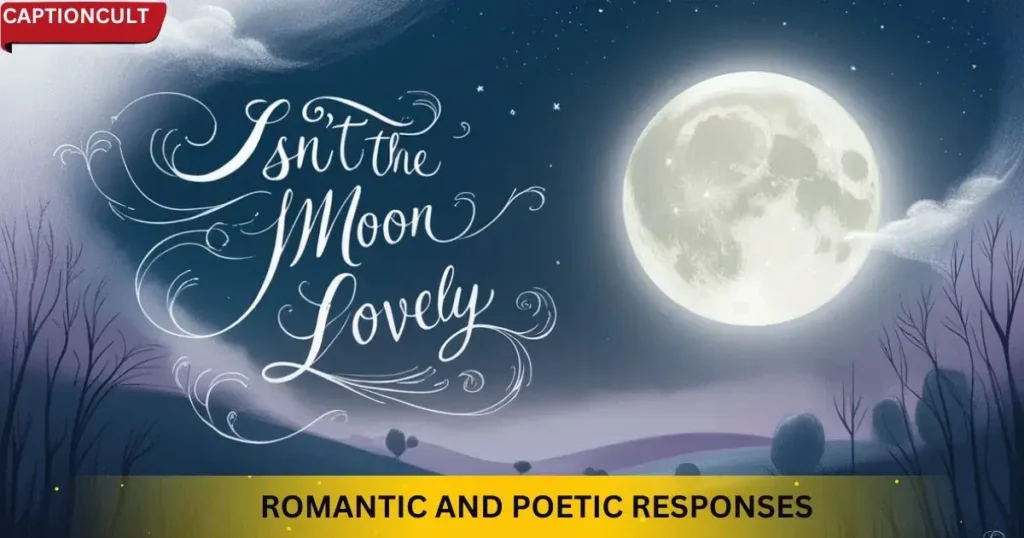
- “The moon’s beauty pales in comparison to your radiance”
A poetic response that elevates the listener above the celestial beauty When to use: Perfect for romantic communication moments that require a touch of elegance. - “Isn’t the moon lovely when it reflects the light of your smile?”
A response that metaphorically connects the moon’s beauty to the listener’s presence Context: Ideal for creating intimate, emotionally resonant moments. - “Just like the moon, you illuminate the darkness in my life”
A profound statement linking celestial imagery to personal emotions Suitable for: Deep, meaningful conversations expressing gratitude and love.
Playful and Witty Replies
- “The moon’s got nothing on you!”
A lighthearted response that playfully compliments the listener Best used in: Casual, flirtatious interactions where humor is appreciated. - “I was just thinking about how the moon is beautiful isn’t it – but then I looked at you”
A smooth, charming response that shifts focus from the moon to the listener Perfect for: Moments requiring a dash of charm and wit.
Philosophical and Reflective Responses
- “The moon is beautiful isn’t it meaning goes beyond mere appearance”
A response that demonstrates depth and understanding Context: Intellectual conversations exploring cultural nuances. - “Sometimes beauty is best appreciated in moments of quiet reflection”
A response that mirrors the subtlety of the original phrase Suitable for: Contemplative discussions about beauty and perception.
Emotional and Vulnerable Responses
- “The moon reminds me of the beauty we share together”
An intimate response that creates emotional connection When to use: Moments of vulnerability and deep emotional intimacy. - “Isn’t the moon lovely – much like the moments we create together”
A response that links celestial beauty to shared experiences Context: Strengthening emotional bonds and expressing appreciation.
Professional and Contextual Responses

- “Beauty can be found in unexpected places, just like this moment”
A versatile response that works in multiple settings Suitable for: Professional and personal interactions requiring tactful communication.
Cultural and Linguistic Nuanced Responses
- “The moon is beautiful isn’t it reply speaks volumes without saying everything”
A meta-response that acknowledges the depth of indirect communication Context: Conversations exploring communication styles and cultural differences. - “In silence, we find the most profound conversations”
A response that echoes the spirit of non-verbal communication Best used in: Situations requiring emotional intelligence and empathy.
Humorous and Light-Hearted Approaches
- “Are we admiring the moon or creating a poetic moment?”
A playful response that adds humor to the interaction When to use: Lighthearted scenarios requiring a touch of wit. - “The moon’s got competition tonight”
A flirtatious and confident reply Context: Playful, romantic interactions.
Introspective and Personal Responses
- “The moon is beautiful isn’t it meaning transcends words”
A response that shows depth of understanding Suitable for: Philosophical and emotional discussions. - “Beauty is a conversation between the observer and the observed”
A profound response linking perception and experience Context: Intellectual and reflective moments.
Empathetic and Supportive Responses
- “In this moment, everything feels perfectly aligned”
A response that creates emotional resonance When to use: Supportive and compassionate interactions. - “Some beauties are best appreciated in shared silence”
A response that honors emotional subtlety Context: Moments requiring gentle understanding.
Creative and Artistic Responses
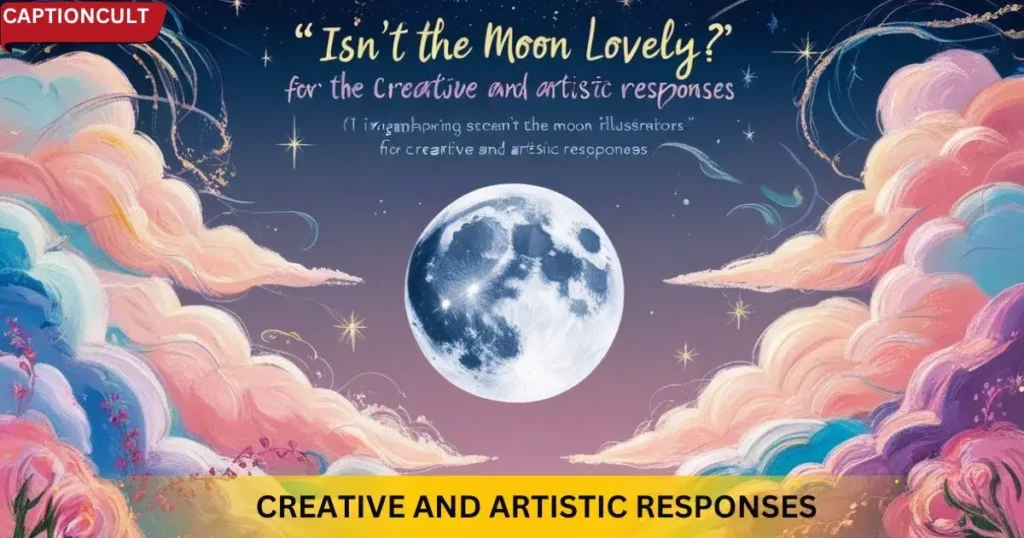
- “The sunset is beautiful isn’t it – but tonight, the moon steals the show”
A creative response that plays with celestial imagery Suitable for: Artistic and imaginative conversations. - “Each celestial body tells a story – what’s ours tonight?”
A response that invites deeper connection Context: Romantic and exploratory interactions.
Intellectual and Thought-Provoking Responses
- “Isn’t the moon lovely as a metaphor for life’s mysterious beauty?” A response that elevates the conversation to a philosophical level Context: Deep intellectual discussions exploring metaphorical meanings.
- “The moon whispers secrets that words cannot capture” A poetic response that highlights the subtlety of indirect communication When to use: Moments requiring profound emotional depth.
Playful and Imaginative Responses
- “The moon is beautiful isn’t it meaning goes beyond mere astronomy” A clever response that demonstrates wit and cultural understanding Suitable for: Conversations that blend humor with intellectual insight.
- “If beauty could be measured, the moon would be our baseline” A creative comparison that adds a touch of whimsy Context: Lighthearted interactions requiring a spark of creativity.
Emotionally Resonant Responses
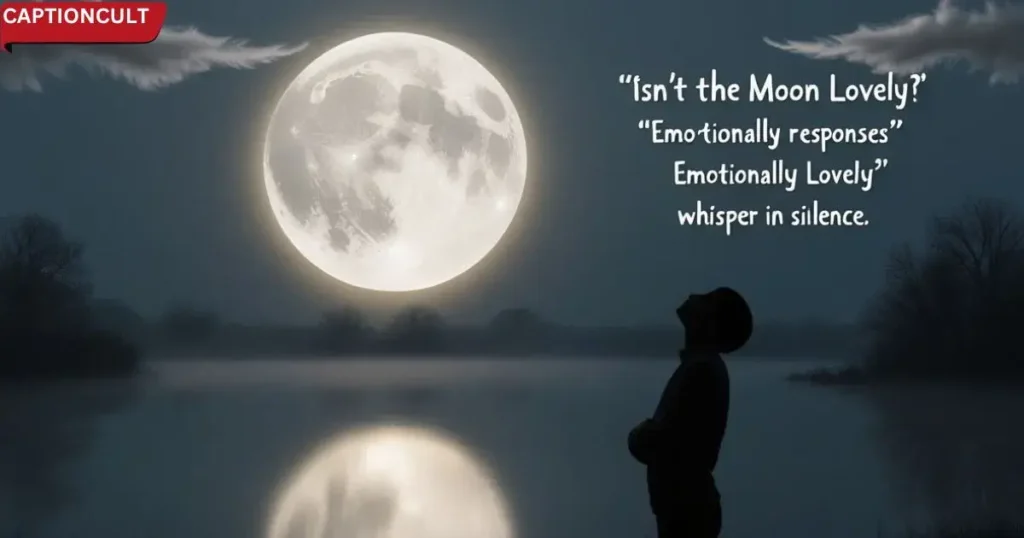
- “The moon beautiful isn’t it – a reminder of life’s quiet moments” A response that connects celestial beauty to personal reflection Best used in: Intimate conversations that invite emotional sharing.
Bonus Advanced Responses
- “Sometimes the most beautiful conversations happen between silences” A meta-response that honors non-verbal communication Context: Situations requiring emotional intelligence and depth.
- “Isn’t the moon lovely – much like the unspoken connections we share” A response that ties celestial imagery to human connections When to use: Moments of deep emotional intimacy.
- “The moon reflects light just as we reflect each other’s emotions” A philosophical approach linking astronomical observation to human experience Suitable for: Profound, reflective interactions.
- “The moon is beautiful isn’t it reply that speaks volumes in whispers” A nuanced response that celebrates subtle communication Context: Conversations exploring cultural communication styles.
- “Beauty is a dialogue, not a monologue” A response that invites deeper connection and mutual understanding Best used in: Intellectual and emotional exchanges.
Culturally Nuanced Responses

- “The sunset is beautiful isn’t it meaning finds its poetry in the moon” A creative response that plays with linguistic and cultural expressions When to use: Discussions about cultural communication styles.
- “Each glance is a conversation, each silence a novel” A response that embodies the essence of indirect language Context: Moments requiring deep emotional subtlety.
Final Profound Responses: Understanding isn’t the moon lovely meaning in various contexts
- “Isn’t the moon beautiful in its ability to connect us?” A response that emphasizes shared human experience Suitable for: Moments of universal connection.
- “The moon listens when words fail” A poetic approach to emotional communication Best used in: Deeply personal, reflective interactions.
- “Beauty is the language of the soul” A philosophical response that transcends literal interpretation Context: Profound conversations about perception and emotion.
Additional Tips for Responding Effectively
- Context is key: Pay close attention to the situation and your relationship with the speaker. A playful response might be inappropriate in a formal setting, while a deeply sentimental response might feel forced in a casual setting.
- Be authentic: Choose a response that feels natural and genuine to you. Authenticity is always more appealing than forced cleverness.
- Match the tone: If the initial comment is light and casual, a similarly light response is appropriate. A more serious comment might call for a thoughtful and insightful reply.
- Consider non-verbal cues: Your body language, facial expressions, and tone of voice all play a part in conveying your message.
FAQ Section
What does isn’t the moon lovely mean?
It often implies more than just admiration for the moon; it can be a subtle expression of affection or shared sentiment, depending on context. The meaning is nuanced and relies heavily on the relationship between speakers.
How do you respond to isn’t the moon lovely?
Your response should mirror the tone; a lighthearted comment deserves a playful reply, while a more serious observation warrants a thoughtful response. Consider both the words and your nonverbal cues to show understanding.
What does “the sky is beautiful isn’t it” mean?
It’s a simple observation of beauty, but can also hint at a deeper meaning depending on context—shared appreciation, unspoken connection, or even a subtle invitation to share a moment.
What does “the moon is beautiful” mean in Japanese?
In Japanese culture, “The moon is beautiful” can be a poetic and indirect way of expressing “I love you,” emphasizing cultural values of subtlety and emotional restraint.
What does it mean when someone says isn’t the moon pretty tonight?
It’s a comment on the moon’s beauty, but could suggest a desire for connection or shared appreciation. The underlying meaning depends heavily on the relationship dynamics and overall context.
How do you say “I love you” in Japanese poetic way?
The phrase “The moon is beautiful, isn’t it?” (tsuki ga kirei desu ne) is a classic example, using indirect language to convey deep affection in a culturally appropriate manner.
Conclusion
Understanding the depth of isn’t the moon lovely meaning, and adapting your response accordingly, will allow you to navigate this seemingly simple phrase with grace, wit, and insightful communication. Remember to choose a response that reflects your personality and your relationship with the speaker, ensuring a meaningful and memorable interaction.
The moon is beautiful isn’t it is more than a phrase—it’s a window into the complex world of human communication, bridging emotions, culture, and personal connection. Whether you’re exploring romantic communication, practicing indirect language, or simply appreciating the art of subtle expression, finding the right reply to the moon is beautiful isn’t it offers a rich palette of emotional possibilities. Understanding the moon is beautiful isn’t meaning allows for a more nuanced the moon is beautiful isn’t it response. Remember, the true beauty lies not in the words themselves, but in the genuine emotions and connections they represent.

This is a passionate author whose work explores the power of language and storytelling. With a keen eye for detail and a commitment to excellence, Julian believes that every word has the potential to create meaning and beauty. “Where Words Find Perfection” is a reflection of his dedication to crafting narratives that resonate deeply with readers.

